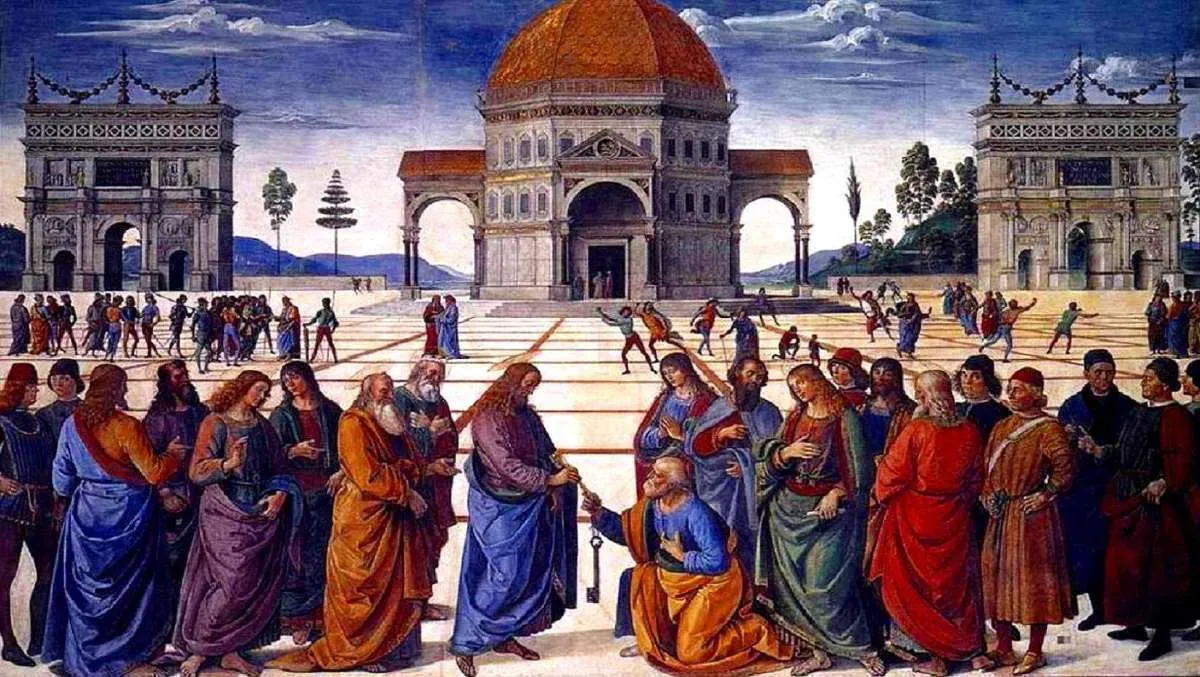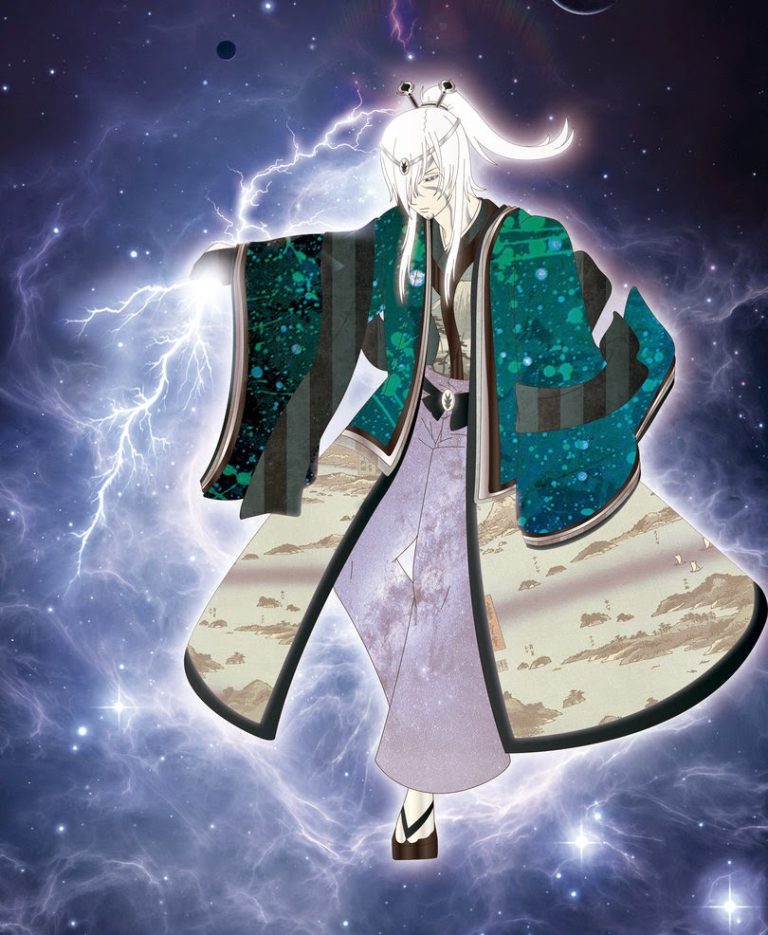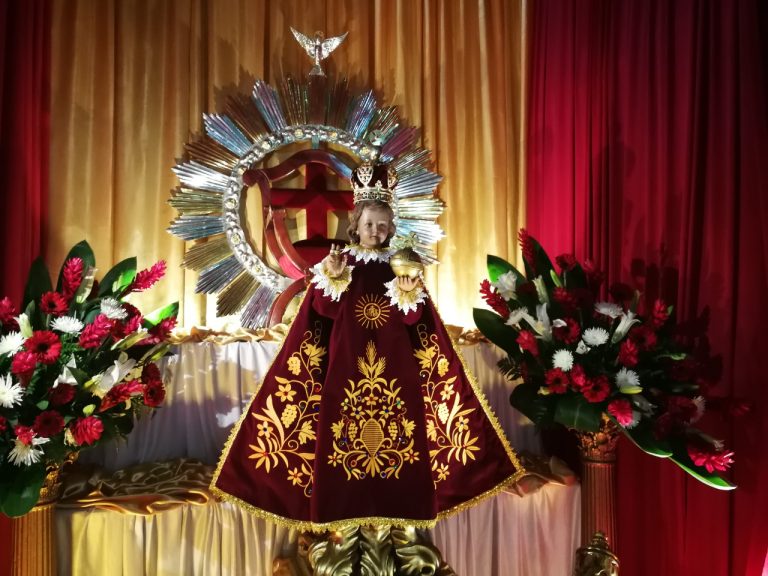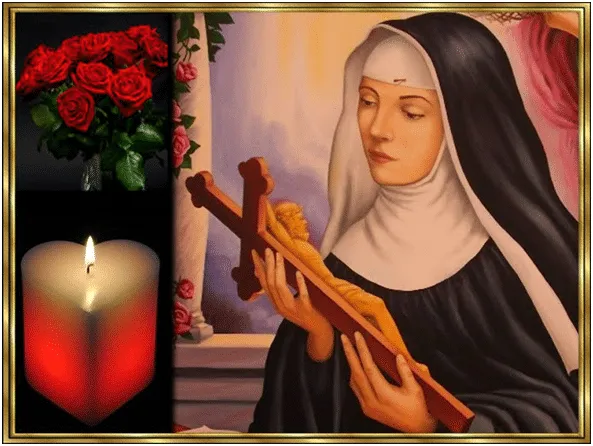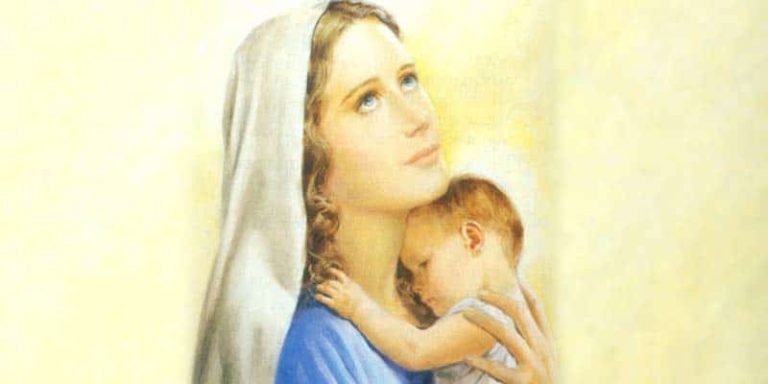The Holy Catholic, Apostolic and Roman Church
The Roman Catholic Apostolic Church is considered the institute, as one of the oldest worldwide. It takes the highest prize in terms of other religions for having a high number of followers or faithful to it. It totally depends on the power that the pope has to control it for his administration worldwide. Furthermore, since the origin of the church, it has influenced many levels of general life in different ways, such as science, art, health. And in the economic and educational contribution of different countries. Especially those with a high poverty rate.
roman catholic apostolic church
This is part of the three main divisions that Christianity has. Being the other two like the Orthodox Church and Protestantism, that among the three teach totally different doctrines and that each one of them has relevance with those who follow it.
But the one that influences people the most is the Roman Catholic Apostolic Church . Being this the one that has almost 18% of people in the whole world according to the pontifical yearbook of 2010, this figure is taken from the number of baptisms performed.
Your main office
It is located in Rome, Italy. Specifically in the Vatican City State. This is a completely independent state and is highly known worldwide. The Vatican State should not be related to the Apostolic See or the Holy See, since the latter is presented as the indeterminate spiritual domain for all those Catholics. And the Vatican State more than everything is considered eventual.
The Holy See is directed by the Pope and in turn by his orders by the Roman Curia. Responsible for helping the pope in the administration of the various Catholic churches that exist in many regions. In this case, it is Pope Francis who must be addressed as his holiness out of respect for the head of the church and honor just for naming him.
catholic
It means that it is everywhere and that it is for everyone. Since before Jesus Christ will rise to heaven next to his father. He left in the disciples teachings, words and work of him. Above all, the legacy and the mandate to make this world know religion through baptism in the name of the father, the son and the holy spirit until the end of time. And it is also believed that she is a missionary because from our Lord the apostles received the order to show or educate anyone who is willing to open their hearts to Christ.
The disciples began dispersing from the great Roman empire to places like; Spain, even to the East and at the end of the first century, the main objective of propagating their beliefs to others was already something definitive. In the year 110 it was verified when Saint Ignatius of Antioch wrote a letter addressed to the Smyrna in Turkey. That it was one of the small Catholic communities that existed at the time. And that through the years they still exist and that it has become a tourist attraction for its great religious history. Where he explains that wherever the bishop was in that community, that is where Jesus Christ can be found in the Catholic Church.
It is curious and very relevant how the Catholic word that comes from the Greek katolicos means universal, which is quite surprising that it was not expected that by the year 110 it was already used, as it was in the case of Saint Ignatius of Antioch who used it for a letter. Which means that religion was already being universal.
Apostolic and Roman
It is considered apostolic since the foundations of this are due to the apostles and their successors with respect to the word that Jesus Christ left. These envoys, as indicated by the word apostles in Greek, are what today we call bishops, who are the ones who are in charge of blessing or trying to take care of the church.
You have to go back in time when Saint Peter and Saint Paul went to the Roman Empire to fertilize the Catholic religion in this area, of course each one at a different time but both with the same purpose. They are considered the pillars of the church and it was there that the cradle of the church was created. Not only for them, but as the respective death of them and of the other Christian martyrs who die only for the proof of their faith in Christ.
That from his spilled blood, those will be the seeds for new Catholics or saints, according to Tertullian, writer and father of the church during the second century. And that is exactly how the expansion of this happened. Although it was Saint Peter who decided that this should be the Holy See. It was not easy for the church to be the empire that we know today. In the primitive days of this, more specifically in the first three centuries of this, it was very persecuted.
As already mentioned to those who professed their Christian love as saying that their Christian name and last name was Catholic, they already presented their death sentence. Since they were stoned, burned at the stake, tortured or as is the case of Saint Ignatius of Antioch who was devoured by lions. This began with the capture of the apostles, so that later he would hunt down the other Christians that existed. This was considered as the era of Christian martyrs. It was not until Emperor Constantine became a Christian that he helped them build various facilities such as the cathedral in Rome. That is why the Catholic Church was determined as apostolic and as Roman.
Roman Catholic Church Name History
There are different names for the house of God and everyone who takes refuge in it. What; Jerusalem from above, the People of God, the Bride of Christ, the Sacrament of Christ, the Barque of Peter or the Ship of Salvation, the Mystical Body of God, the edification of God, among others.
But the one that is more important is the Roman Catholic Apostolic Church but not all the time it was named in this way as the Roman Catholic Church. It should be noted that these differences are made in terms of naming it. Since there are also the Anglican Church and the Orthodox Church that preserve themselves as the formation of this one church and that are also named as being catholic.
The only differences between the Roman Apostolic Church and others such as the Orthodox or the Anglican is that the latter are not governed by the Pope, nor do they share the same traditions in terms of the country where they are implemented. For the simple fact that where they taught religion, the language marked the distinctions in terms of the name that was applied to them.
And there are still churches that are under the mandate of the pope that do not adopt the “Romana” in their name. Just because they have different ways of carrying out some act or ceremony of the religion. This is why some churches in different territories such as; the Oriental is only named as a Catholic church.
Purpose of the Roman Catholic Church
This church is considered as the exclusive one that was formed by the son of God. This means that it calls itself the true one since from its foundation throughout its history many more churches arose, nicknamed themselves Christian.
She also spreads without any complications since she sees herself as the true one in being the representative in spreading the word of Jesus Christ. As well as the way to find our way to the purest thing that would be God.
Through the direction of the sacraments. They are the ones that keep you closer or establish a closer relationship with our holy spirit. And that he grants you, the gift of him only for your unlimited devotion. For example; baptism, confirmation, the Eucharist, penance, marriage, holy orders, and the anointing of the sick. Although it should be noted that if you believe in him, you will always have a close relationship with him since we are all children of our creator.
The Catholic Church trusts in their heavenly task as already mentioned that they have been commissioned by Christ to make Christian learning known. Taking good care of the preparation and death of this. They also have the task of imparting mutual love among their followers as well as safeguarding their well-being.
Everything remains standing thanks to the pyramidal distribution that the church has. Starting from the pope to the bishops that are scattered throughout the world. They also base all their presentations or teachings on the bible or holy scriptures, specifically on divine revelation. The latter tries to discover or manifest some statement that some supernatural or divine being wants to make, such as; the angels, the Virgin Mary, Jesus Christ or God himself.
doctrine of the roman catholic apostolic church
Doctrine is considered to be the grouping of elements of teachings about the real questions of faith. What are the conclusions and acts that our Lord Jesus Christ carried out throughout his life, which was so that we can find our redemption and the best path to achieve our eternal life.
The main essence or primary doctrine of the Catholic Church is in the Apostles’ Creed. And it makes sense since they were one of the primary causes for religion to grow and throughout history, they kept the meetings or boards in favor of it, in which they decided, preserved or collaborated to implement in religion doctrinal issues and instruction to it.
Giving rise to the publication in 1992 of the Catechism, which is a book full of explanatory material about some specific doctrines as well as the foundations of faith towards Christ, what is the true form of morality, the one that has no defect and as we should follow it with the stipulated steps that guide us through this. This was authorized by John Paul II who was the 264th Pope of the Catholic Church.
The knowledge towards the revelation is a very important base in the catholic foundation. Since they are strongly connected with the bible or sacred writings and with the tradition towards divine entities that cannot be controlled, as is the case with many characters reflected in history.
Another outstanding doctrine in the Catholic religion is that of the Holy Virgin Mary or the Immaculate Conception, the most holy mother of Jesus Christ. That many other branches of Christianity do not share in this belief. As well as not accepting the ecumenical councils, which are meetings that are held by bishops of different Christian churches to evaluate some doctrinal issue. Such as; the Council of Nicaea, the Second Vatican Council that were not approved by other Christians but by Catholics.
The Catholic Church retains another well-known doctrine than the Eucharist. It consists of blessing the bread as the body of Christ and the wine as its blood. In which a reminder of the death and resurrection of the son of God is made. In which he reads the sacred writings and after this is shared with those who made communion.
The capacity in the faith that they have in the followers towards the church is incredible. Since they blindly trust in the divine power that it has to carry out, through the Sacrament of Penance or indulgence, the forgiveness of the sins of the Roman Apostolic Catholics and obtain the exoneration of the provisional penalties due to them.
The status of the Pope in this religion is considerable. The College of Cardinals meets in conclave. This is considered a sacred place where the contained cardinals are found and they are responsible since the eleventh century for choosing the new pope of the entire Catholic Church. That he will be appointed as the new continuator of Saint Peter.
Attributes of the profession of faith of the roman catholic apostolic church
The catechism states that there are only four official attributes. Such as; one, holy, catholic and apostolic. These are closely related to each other. They seek to indicate primary qualities of the church and her task with faith. Here are the following official ways to interpret them:
Holiness
They are considered saints or saints to those people in our history who have made totally heavenly contributions in the name of our creator, with their faith well intact. Although it is somewhat shocking to name another person as a saint since, just like one of us, he sins in action or in thought. But he is considered a being who has gotten the most of his ethics.
Unit
Everything in the Catholic religion leads to only one thing. One nothing else. You have to go to the beginning of history as such and we will see that there was only one entity that created everything. And only one that cemented the foundations of faith, hope and healing that was Jesus Christ. And that through his apostles more specifically Saint Paul has written in a letter. That he believed and thanks to that it is believed that the church is the body of Christ.
It is true that we have several limbs, head, arms, trunk and legs but all together there is only one body and that is why the church is represented in this way. Since there may be many churches of various doctrines but there will only be one original religion from which the others start.
Catholicity
This word of Catholics is used because it is imposed on the followers or faithful of Jesus Christ throughout our history and because of a very important fact, the territory, since the word that he shared was expanded by this. And I increase by the prayers towards our lord the salvation of many people who sought him thanks to the expansion.
As previously mentioned, catholic means universal. And this also meant that as long as all the sacraments imparted were fulfilled and accepted in the depths of their being, thus preserving the good ethics that were required or required no matter where they came from. With this, baptism is a fundamental part because for each Catholic who is baptized, the Catholic Church will be there. And his goal to bring the good news to the world.
apostolicity
The pope and the bishops everywhere are the continuators of the legacy of Jesus Christ, Saint Peter and the other Apostles. These should play the leading role of command and power, just as the former did. Also to send the learning implemented by Christ everywhere locked up worldwide. And that they must be given by the highest authority, which in this case is the Pope and the corresponding administration.
Hierarchy of the Roman Catholic Church
Like everything in this life, there must be an order. Otherwise everything would be chaos. And the Catholic Church is not indifferent to this important fact, especially when they have so many people following or watching the actions of each one of them. The following demo goes from highest to lowest in power:
ecumenical council
It is a group of cardinals and bishops around the world who meet in a certain place for a very important situation in the church. They are so essential for proper functioning because they are the ones who make the decisions between whether or not to leave some new doctrine and implement something new for others to follow.
Pope
This is chosen by the college that congregate in conclave, it cannot be overlooked that they are chosen by the successor of Saint Peter, the Pope. It has already been mentioned that the ecumenical council is the one that proclaims dogmas or new doctrines or emphasizes some that already exist, it is for this reason that in 1871 they highlighted a very important doctrine that is papal infallibility in which it proclaims that the pope has to guard against making mistakes when it comes to dictating teachings about religion specifically in matters of ethics or the Catholic Church. This has generated a lot of discussion or controversy inside and outside of it. His task is to administer all the actions, acts and words that are carried out.
cardinals
They have the responsibilities of procuring and assisting the pope in his daily duties or tasks. They are also in charge of coordinating everything within the Vatican state as well as that of the Curia. That it is an entity formed by the legislative, judicial and executive powers that the church has. As well as having the power to meet when the pope dies in order to choose another. These are specifically chosen by the pope who leads.
bishops
They have power over some territory chosen by the church. And that he only has to answer to the Pope, only and exclusively to him, not even to a cardinal. The church is governed or more than all formed by a large number of bishops. These are mostly aided by the priests.
Organization
This is administered throughout the world. In several regions, in some more than in others. And in different countries sometimes with a higher percentage of believers than in others. The only certain thing is that it is a strong religion, visibly expanded since most of the people who inhabit the earth know it. Its structure is organized by Slavs of power. This being with a majority by the bishops
These Slavs of power are manifested above all in the clergy, who are those who are entrusted by a religious office. This is segmented by the already mentioned bishop, by the presbyter who can be the delegate of the bishop’s functions if he deserves it and can be the one who establishes an order in a parish since he is allowed. And finally there are the deacons, sent to help a priest in his work.
The bishops are also in charge at the territorial level of the individual churches that call themselves dioceses. And sometimes there are other of these churches that are considered of high hierarchy that are named as; archdiocese. In this there is a peculiarity, it is no longer a bishop who you would call in charge of this, but we would name him because of his high status as; archbishop.
In the eastern region there is a radical change in the name that we apply to the dioceses. Instead they are called eparchies and in the case of archdioceses they are named as; archeparchies. Not everything can be considered the same for this reason some districts are classified as abbeys and prelatures. These can be directed by an abbot and a prelate. Of course considering that each to his own.
Religious orders in the Roman Catholic Church
These orders are those that through votes do not matter as such what the nature is as indefinite or defined in terms of time. In which they practice their religious situation. The orders strongly need the Pope and as the church is mostly made up of the bishops. Since they are an important part of it, that is why diverse and different types of bishops are also necessary. It should also be noted that these orders do not constitute in any way a fraction of the Roman Catholic Apostolic Church.
There are two types of religious orders:
- Of diocesan right: These have not received full approval to carry them out from the Apostolic See. But apparently it is not highly necessary since it would only have the permission of the bishop of a district or diocese for this order to be carried out.
- Pontifical right: Unlike the first is if you need the consent of the Holy See and the Pope. Since this is stricter with its way of administering for the correct management imparted by them of the different doctrines.
It must be taken into account that both are opposed to each other. Regarding the differences in which both impart their knowledge or the way of handling said orders.
Votes are an indispensable part of these demonstrations for the following reason. These represent three basic formations of life such as; poverty, chastity and obedience. Although these votes depend on those orders that consider implementing them. There are many practices that are carried out, for example: fasting, prayer, pilgrimage, meditation and penance. The important thing about all this is that no one should be lacking in the commitment to offer body and soul life without spaces to our heavenly father, God. The purpose of these orders is to point out to other people outside of religion that a life full of happiness, kindness, chastity and obedience can be achieved thanks to the intense experience that they proclaim.
History of the Roman Catholic Church
You don’t have to be a fortune teller to know that if we talk about the history of the church we may fall short. Because this one even has many parts, details or anecdotes that we still don’t know and that possibly we never will, since at that time very few people didn’t know how to read or write. It was difficult to get such people at that time, although Jesus Christ did. He got some apostles who knew how to write the acts and words that he left and that are mostly found in the holy scriptures or the bible, mostly in the new testament.
Old age
It all started with Jesus Christ, the son of God. The chosen one to raise the word of God and thus direct it to other people. He was the first founder of this church by commanding to organize or administer through his apostles the tasks that he entrusted to them towards the correct management of it before he ascended to heaven to be at the right of his father. The one we know as God, father of us all.
Thanks to what Christ entrusted to the Apostles. They were in charge of promulgating and establishing some bases as well as some rules for all those who wanted to be Christians. And they went searching through the regions they visited which was going to be the house of religion or the body of Christ.
It was thanks to Saint Paul that Saint Peter went to Rome, at the moment of arrival they found themselves in the middle of the Roman Empire led by other religions. But they realized that this will be the home of their faith for inexplicable reasons that only they could feel. Christianity remained on a tightrope during its first century after Christ, but this does not mean that the faith of its believers collapsed, what this achieved was to raise it. It was not until the era of Constantinople that the balance tipped towards Christianity and it became much stronger. And it spread like fire across the horizons, it no longer had limits that oppressed it.
Pedro was the one who chose and decided that this would be the capital of the Catholic Church. Many consider him the father of this and others think as different authors that he was the first bishop of the church. But there is not enough evidence to prove such a theory.
Middle Ages
By the 5th century this expansion of the Catholic Church was already a fact. The Roman Empire was already totally involved in religion. And this had also been imposed on a group of Iberian coasts, which called themselves Hispania but which in reality today we know as Spain. That was the primary name given to this country when the Romans had it.
It spread to Syria and from there to the coastal areas of Africa. All this had expanded in the southern area of this European continent, later it was proposed to carry out the task of going south, reaching countries such as Great Britain, Ireland, Germany and small areas of central Europe as well as towns Eastern Slavs. It was not something immediate, this task lasted a long time, like any process that is done. The Christians at no time stopped and achieved expansion, this dates back to the eleventh century.
It was in 1054 that the Catholic Church began to segment itself, due to problems or confrontations over philoquism, a capsule that was very similar to a doctrine that already existed, that of Alexandria in Rome and the command of Constantinople. Thus creating what we now call the Orthodox Church.
There was a considerable change in the history of the church in the fourteenth century. Especially in the cultural part of the time, thanks to this, multiple universities were inaugurated throughout the continent, more than anything theological, the study of the Catholic region and everything spiritual. Although they focused on that, there were also several specialties such as; the art that for the moment was the highlight, the music, the law was already something safe for the time and despite the fact that they did not allow much research into it, due to the issue that the body was considered untouchable due to the issue of religion, medicine.
The mendicant order caused a great revolt in the religious community. Since the members of this order only promulgated vows of poverty and thus be living on the charity of other people. These orders were created in the thirteenth century.
The 14th century was the most serious for the church as there was a split or separation in the catholic church community, this lasted about a whole century and possibly more than that. It was called the Eastern Schism. It was due to some conciliatory thoughts, which believed that the same council has the absolute power of the church and even of the Pope himself. That fact was condemned through a council. The Fifth Lateran Council was held in 1516.
The famous Inquisition of the Catholic Church
Even this historical fact gives much to talk about today. Not only because of the seriousness of this at a scientific or cultural level, which was very impressive. But because of the wars that took place throughout this period where you couldn’t have another religion other than Catholic.
The inquisition takes shape and refers to those organizations that are responsible for eliminating or abolishing different forms of thought or religious customs different from what is stipulated or what is considered popularly correct. This had its beginning in the year 1184 in the south of France. Calling itself the medieval inquisition.
It expanded in such a way throughout the European continent that it had various names depending on the country, the Spanish inquisition, the Portuguese inquisition, the Roman inquisition, which also adopts the other name of the Holy Office, among others. And by the Spanish inquisition this was extended to American territory, when it took place some time later in the Spanish conquest of this territory.
Modern age
It had already spread throughout the European and American continents by the Spanish and Portuguese. So they set themselves the task of continuing to reach continents that they had not reached before, such as Asia, and although they had reached the coastal areas of North Africa at one point, they did not fully expand in that period, but rather some time later.
Internally they want to achieve changes within the church and that is why certain complications arise between them. But nothing that time manages to appease as this tension calms down. On the other hand, the invention of the printing press generated a greater flow of believers since for this reason copies of the sacred scriptures or the Bible and their translations were made in order to reach different countries. Not everyone in those times could afford the Bible, so they only attended church to hear the words of Jesus Christ. This had an excellent impact on the community.
Martin Luther was an important theologian who changed the course of history and it was precisely because of him that the Protestantism movement began in 1517. And this had great consequences in the church since this movement sought that the Pope would not have any power or authority. with the church, as well as politically and economically. We are talking about the fact that at that time the church controlled all aspects of life in general.
As well as other movements such as Calvinism, inspired by Luther that originated in Switzerland and spread to other countries in Europe. Also in that same century there was another separation of part of the Catholic Church in which the Anglican Church is formed.
Contemporary age
This era begins at the end of the First World War. In which revolutions begin both socially and economically such as: the industrial revolution and the revolution about liberalism. I influence a lot with this religion. In the political change they have had to adopt several reforms, political statuses such as; socialism and communism.
Without a doubt, this age is the one that has seen the most changes in the church. Freedom of expression and some other ideas of the people have influenced religion but this does not mean that it is losing meaning. Rather we would not be what we are today thanks to the many contributions it has made to society, it is important for the proper functioning of any community if this is its religion.

Hello! Let me enthusiastically introduce myself as a dedicated blogger fueled by an intense passion for meticulously crafting insightful and well-researched blogs. My mission revolves around providing you, dear readers, with a veritable treasure trove of invaluable information.

